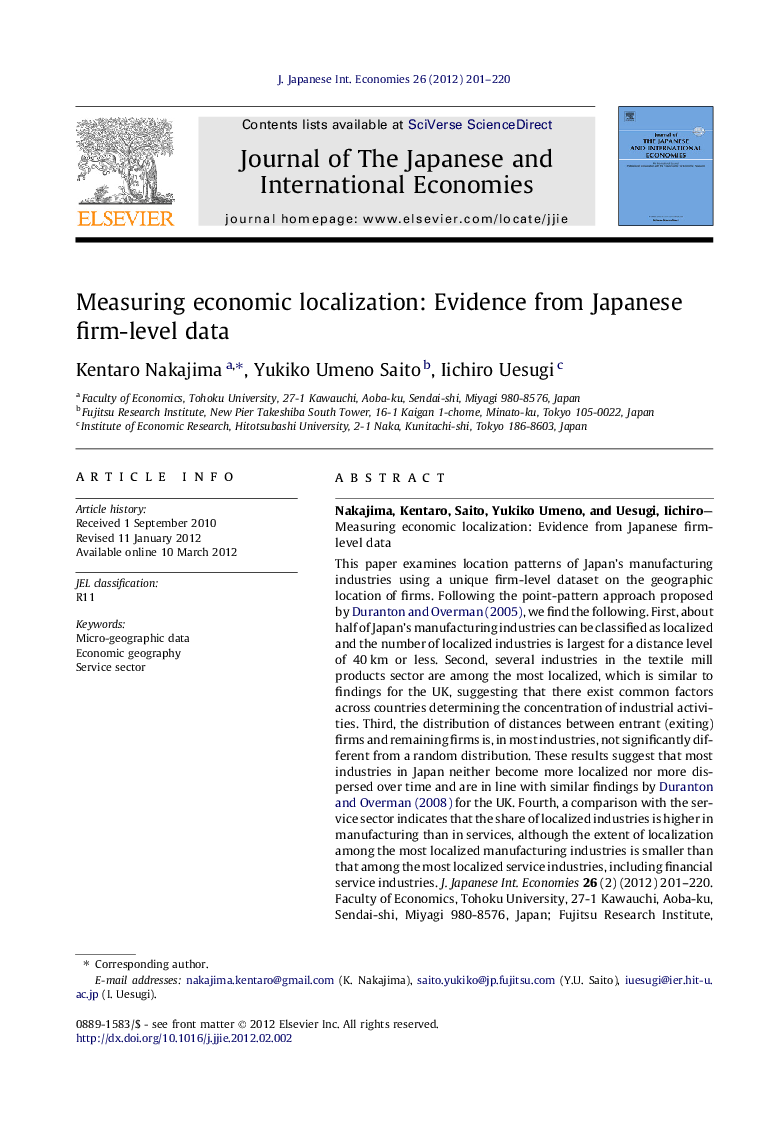| Article ID | Journal | Published Year | Pages | File Type |
|---|---|---|---|---|
| 964542 | Journal of the Japanese and International Economies | 2012 | 20 Pages |
This paper examines location patterns of Japan’s manufacturing industries using a unique firm-level dataset on the geographic location of firms. Following the point-pattern approach proposed by Duranton and Overman (2005), we find the following. First, about half of Japan’s manufacturing industries can be classified as localized and the number of localized industries is largest for a distance level of 40 km or less. Second, several industries in the textile mill products sector are among the most localized, which is similar to findings for the UK, suggesting that there exist common factors across countries determining the concentration of industrial activities. Third, the distribution of distances between entrant (exiting) firms and remaining firms is, in most industries, not significantly different from a random distribution. These results suggest that most industries in Japan neither become more localized nor more dispersed over time and are in line with similar findings by Duranton and Overman (2008) for the UK. Fourth, a comparison with the service sector indicates that the share of localized industries is higher in manufacturing than in services, although the extent of localization among the most localized manufacturing industries is smaller than that among the most localized service industries, including financial service industries.
► We examine location patterns of Japan’s economic activities using micro data. ► Half of Japan’s manufacturing industries are localized. ► The share of localized industries is higher in manufacturing than service. ► The extent of localization is higher in service than manufacturing. ► Entrant (exiting) firms are not more concentrated than the other firms.
